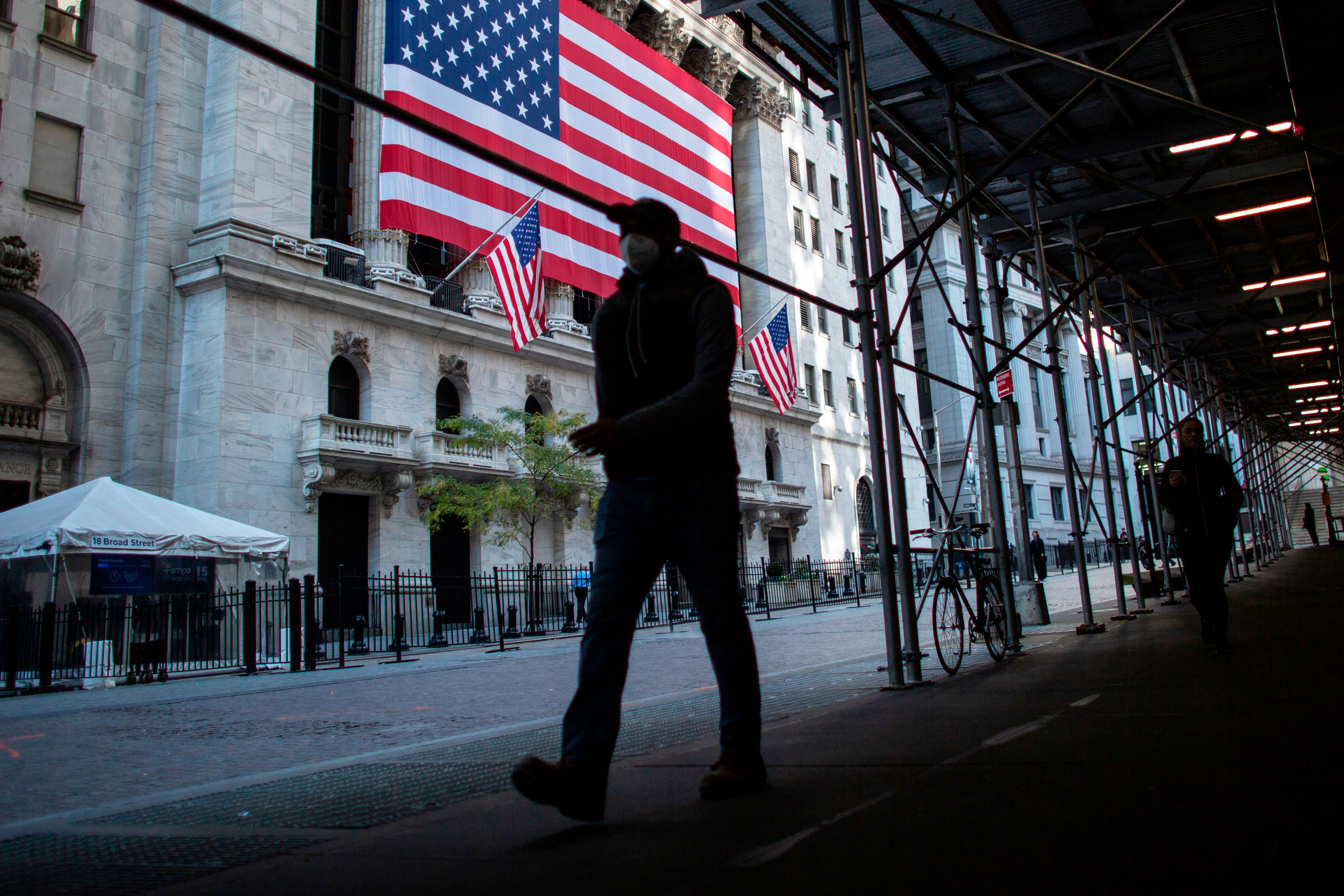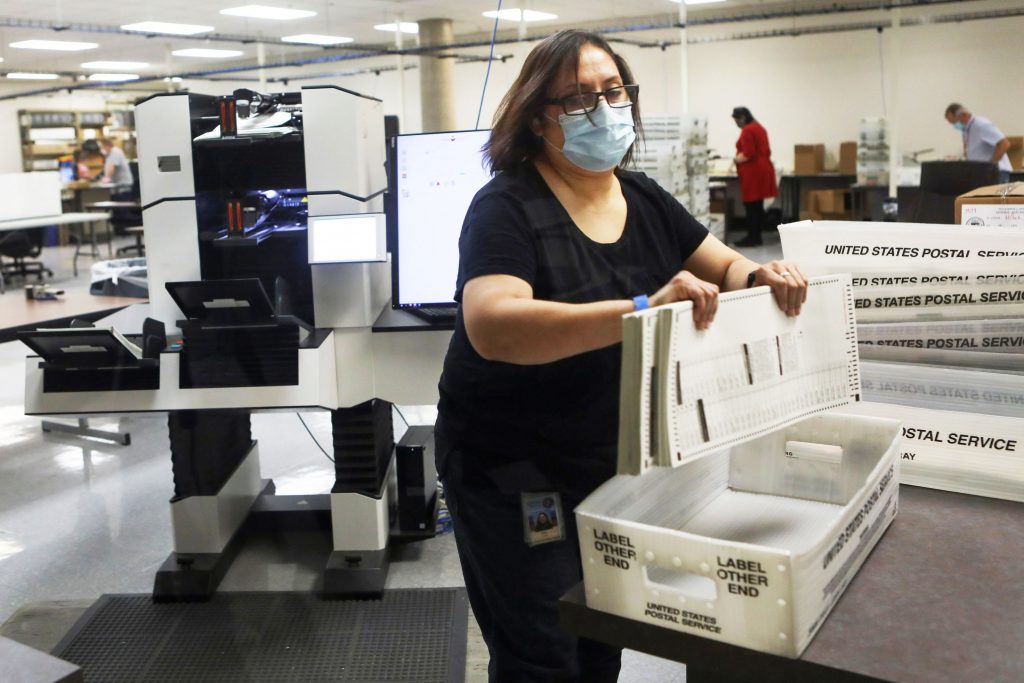
People pass by the exterior of New York Stock Exchange (NYSE) on November 4, 2020 in New York.
Kena Betancur | AFP | Getty Images
By now, “2020” has become four-digit shorthand for the unprecedented, unsettling and unbelievable. Yet in the markets, from point to point, this year has been surprisingly normal for a buy-and-close-your-eyes investor.
After last week’s tension-release rally, the S&P 500 has posted an annualized gain of about 10% for 2020, or 12% or so including dividends, right in line with the historical yearly average.
For investors in a traditional balanced portfolio of 60% stocks and 40% bonds, the returns are almost the same – a bit better than the long-term average for this strategy, but not by much.
Now, sure, the path has been wild. Since the year began, the S&P 500 went up 5%, down 35% and then up 60%. Yet market performance is always streaky and exaggerated rather than steady and comfortable.
This year some of the cadences have conformed to the “usual” pattern, too. After May, the rally flattened out and grew less stable, in line with seasonal tendencies. September, the worst month of the year through the decades, saw a sharp 10% correction. And September and October together were choppy, in the typical manner of those months in an election year.
The hecklers might look at the positive resolution to the drama of this pandemic-and-recession-beset year so far and insist it was all because of the Federal Reserve. And, sure, the Fed did its job in providing liquidity during a panic and pursuing its legal economic mandate of maximizing employment.
“Where would the market be without the $3 trillion government stimulus?” the purists will ask, and the answer is, “In a bad place.” It’s true that Congress, with rare urgency and uncommon consensus, utterly short-circuited a recession with a massive infusion of cash into the economy — and might have modeled effective fiscal activism for future crises in the process.
Eight weeks left
Where does that leave the market now, with eight weeks left in this jarring but in some ways not-so-unusual year? Is it set up for the “normal” November-December tack-on rally?
Well, to start with the basics, it remains a bull market, one of the strongest on record if one dates its start to March 23 of this year. After the same number of days since the start, this run is about even with the initial ramp of the bull market that started in August 1982, and behind only the one that launched March 2009, according to SunTrust. Other perfectly respectable, multi-year bull runs faltered or stalled a bit around this number of days since they began, but then resumed their climb.
Last week’s 7% pop in the S&P 500 is perhaps best seen as a collective mood swing from anxiety to relief to FOMO, or fear of missing out. As hinted here last week, investors ahead of the election had grown scared and cautious enough to create the makings of an upside reversal.
Early in the week, the market was positioning as if confident of a “blue wave” ushering in Democratic control of government and major fiscal expansion with higher taxes. Treasury yields and cyclical stocks rose dramatically. After Election Day pointed toward divided government with less chance of an aggressive fiscal agenda, growth stocks and bonds were bought avidly.
Yet the rationales were most likely less relevant than the fact that investors simply let go of their fears and downside hedges once the big, looming event passed in a mostly orderly way.
As Deutsche Bank strategist Parag Thatte put it, “While various market narratives have ascribed fundamental drivers to the moves across asset classes, in our reading these have been in line with the historical playbook, largely reflecting instead an unwinding of protection that is common around calendar risk events.”
Bullish signs
The buying was surely intense enough, with the look of under-invested fund managers and individual investors grasping for exposure to a market before it ran away from them. The S&P 500 logged four straight daily gains of at least 1% for the first time in 38 years. On three separate days more than 80% of NYSE volume was in advancing stocks, a sign of powerful demand for shares.
If there’s a concern in the immediate term, it could be that the market has burned a lot of fuel simply to rush toward the upper end of its three-month range. And it’s running a bit hot too. The S&P jumped from just over 3200 to above 3500 in a week. It previously traveled almost the same distance between similar levels over the course of three weeks into the Oct. 12 peak. Some cooling off or choppy churn would be neither surprising nor particularly damaging at this point.
Other reassuring tidbits: The S&P 500 notched a record-high weekly close Friday (of relevance to some chart-studying traditionalists); semiconductors made a new high (though are starting again to look a bit stretched); and credit conditions are at their strongest since the Covid collapse. Any of these can reverse, but it’s tough for the market to get into too much trouble unless and until they do.
Companies have proven unexpectedly resilient, too, with profits bottoming at a higher level than forecast. John Butters, senior earnings analyst at FactSet, notes that analysts in October boosted S&P 500 profit forecasts for the current quarter by 1.8% so far. This is rare, only the third time since 2011 that estimates have gone up in the first month of a quarter; on average forecasts tend to fall more than 2% over such a span.
There’s little doubt that the passage of the election will soon give way to another focal point of worry, whether the Covid-case surge or related prospect of a backsliding economy due to health-related business restrictions.
This would test investors’ impressive ability to continue looking ahead to vaccine progress and corporate revival. Yet given Wall Street’s unlikely ability this year to turn extraordinary world events into perfectly normal positive returns, it’s hard to bet too confidently that the market would fail such a test.

